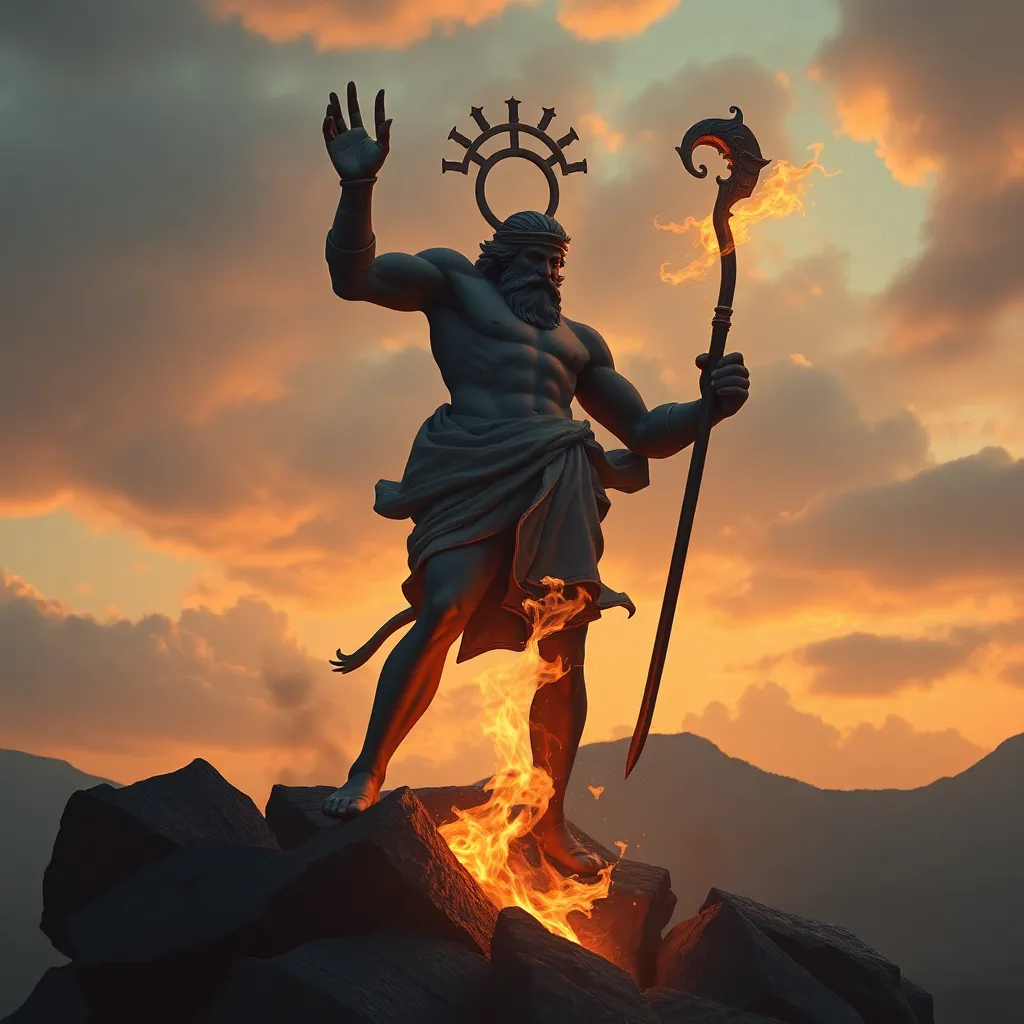Hephaestus and the Art of Storytelling: Myths That Inspire
I. Introduction to Hephaestus
Hephaestus, the god of fire and craftsmanship, holds a unique position in Greek mythology. Often overshadowed by more glamorous deities, Hephaestus represents the power of creation through labor and artistry. His character embodies the essence of storytelling—where every narrative is a craft, meticulously forged from the fires of imagination.
His significance in mythology and storytelling lies not only in his divine abilities but also in the profound lessons his stories impart about resilience, creativity, and the human condition. The connection between craftsmanship and narrative is evident in how both require skill, patience, and a deep understanding of materials—whether they be words, ideas, or metals.
II. The Origins of Hephaestus: Birth and Betrayal
Hephaestus’s origins are steeped in tragedy and rejection. Born to Hera, he was often seen as a disappointment due to his physical imperfections. Unlike the other gods of Olympus, Hephaestus was not blessed with beauty or strength, leading to his mother’s disdain. In a fit of anger, Hera cast him from Olympus, resulting in his fall to Earth, where he landed in the sea.
This act of betrayal by Hera sets the stage for Hephaestus’s character development. The pain of rejection and the struggles he faced on Earth shaped him into a resilient figure who would ultimately find strength in his craft. His journey from exile to acceptance encapsulates themes of perseverance and self-discovery.
III. The God of Fire and Forge: Craftsmanship as a Narrative Tool
Hephaestus is best known for his extraordinary skills as a blacksmith. He forged weapons and armor for the gods, including Zeus’s thunderbolts and Achilles’ shield. His workshop, filled with fire and smoke, symbolizes the transformative power of creativity.
The symbolism of fire in storytelling is profound; it represents both destruction and creation. Just as fire can consume, it can also illuminate and give life. In the myths surrounding Hephaestus, craftsmanship becomes a narrative tool that highlights the duality of creation—the beauty of art and the toil that comes with it.
IV. Hephaestus’s Relationships: Love, Betrayal, and Redemption
The complexities of Hephaestus’s relationships, particularly with Aphrodite, add depth to his character. His marriage to the goddess of love is often seen as a juxtaposition between beauty and craftsmanship. Despite his devotion, Hephaestus faces betrayal when Aphrodite falls in love with Ares, the god of war.
This story illustrates themes of betrayal and heartache, showing that even a god can experience profound emotional pain. However, Hephaestus’s narratives often conclude with redemption; he uses his skills to create intricate traps to catch the unfaithful lovers, ultimately reclaiming his dignity and showcasing his cunning.
V. The Myths of Hephaestus: Key Stories and Their Lessons
Several major myths involve Hephaestus, each carrying valuable lessons:
- The Creation of Pandora: Hephaestus was tasked with creating the first woman, Pandora, whose curiosity led to the release of woes into the world. This myth teaches about the consequences of curiosity and the complexities of human nature.
- The Marriage of Hephaestus and Aphrodite: Their union highlights themes of love, beauty, and betrayal, while showcasing Hephaestus’s talent and the often-overlooked virtues of loyalty and hard work.
- The Revenge on Ares and Aphrodite: Hephaestus’s cleverness in capturing the unfaithful couple serves as a reminder that intelligence and creativity can triumph over brute force.
These myths impact ancient and modern storytelling, illustrating that tales of struggle and triumph resonate across cultures and eras.
VI. Hephaestus in Art and Literature
In ancient art and literature, Hephaestus is often depicted as a bearded man working at his forge, surrounded by tools and flames. His representation varies, but he consistently embodies the ideals of craftsmanship and creation.
Hephaestus’s influence extends into later works, inspiring artists, writers, and creators across the centuries. His character serves as a muse for contemporary creators, symbolizing the enduring human spirit and the quest for artistic expression.
VII. Lessons from Hephaestus: Inspiration for Modern Storytellers
Hephaestus embodies the struggle and triumph of creativity, making him a powerful symbol for modern storytellers. His narratives remind us that:
- Perseverance: Even in the face of rejection, perseverance can lead to greatness.
- Innovation: Creativity often comes from overcoming obstacles and finding unique solutions to problems.
- Resilience: The ability to rise from hardship is a timeless lesson applicable to all walks of life.
Modern writers can draw inspiration from Hephaestus’s legacy by embracing these themes and incorporating them into their narratives, creating stories that resonate with audiences on a deeper level.
VIII. Conclusion: The Enduring Legacy of Hephaestus
Hephaestus’s role in mythology and storytelling is profound and multifaceted. His tales of creation, love, betrayal, and redemption remain timeless, offering valuable insights into the human experience. The narratives surrounding Hephaestus encourage us to explore our own creativity and find inspiration in the struggles of life.
As we delve into these mythological narratives, we discover that they are not merely stories of gods, but reflections of our own challenges and triumphs. Let us continue to explore the legacy of Hephaestus and find inspiration in the art of storytelling that transcends time and culture.




